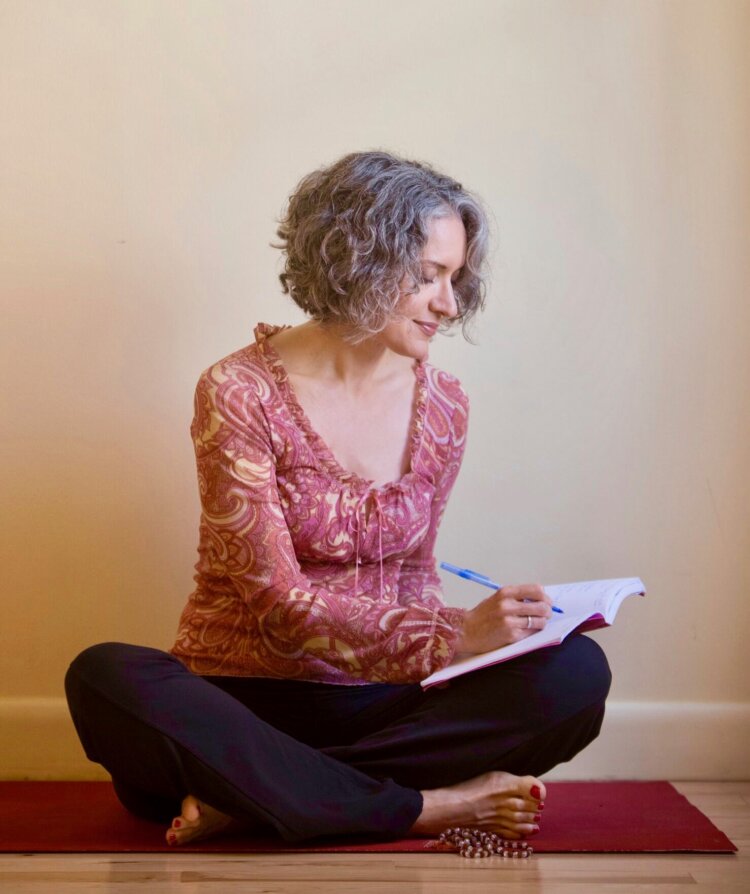
My sister doesn’t have a lot of time to text. She has three boys under the age of 10, so when she texts, whatever it is must be important. A month ago, she sent two words surrounded by hearts and exclamation points: “Bullet Journal!!!”
A quick search online revealed that the Bullet Journal was A Thing. Or was it many things? At first glance, the Bullet Journal seemed to be an organizer—but not a day planner. It wasn’t an app, but an actual notebook. Bullet Journal enthusiasts made elaborately laid-out pages; was it a tool for designers? And judging from the raves of the converts who used it, the Bullet Journal appeared to be a time-saving, life-changing miracle.
The most accurate description of the Bullet Journal came from my sister, who texted “What Marie Kondo did for stuff, the Bullet Journal does for organizing your life.” That got my attention. I have stacks of to-do lists on, around, and even under my desk. Each page is filled with notes ranging from important business matters to shopping lists for the farmers market, long-term goals to reminders to pay my phone bill today. Items stayed on a page until I crossed them off, so I’d have to start new pages because the previous ones got full before every box was checked done.
In addition to being distractingly messy, this had consequences. I wasted a lot of precious time searching for notes about a workshop I was teaching in a few weeks. I’d written down all the components in a flurry of inspiration, but as the workshop date approached, I couldn’t find the piece of paper.
It was time to bite the Bullet.
 In the same way that Marie Kondo’s Life-Changing Magic of Tidying Up was about more than purging sweaters, the Bullet Journal is more than a mere day planner. The system, and the story behind it, is explained in The Bullet Journal Method by Ryder Carroll, a graphic designer tormented as a child by intense Attention Deficit Disorder. As an adult with a job, side projects, and a busy life, Ryder wanted to get organized in a way that worked for his focus-challenged wiring. Over time, he developed a method of journaling in a notebook that let him free up the real estate of his brain for the important things he wanted to do.
In the same way that Marie Kondo’s Life-Changing Magic of Tidying Up was about more than purging sweaters, the Bullet Journal is more than a mere day planner. The system, and the story behind it, is explained in The Bullet Journal Method by Ryder Carroll, a graphic designer tormented as a child by intense Attention Deficit Disorder. As an adult with a job, side projects, and a busy life, Ryder wanted to get organized in a way that worked for his focus-challenged wiring. Over time, he developed a method of journaling in a notebook that let him free up the real estate of his brain for the important things he wanted to do.
The book explains the how of Bullet Journaling, which starts out simple—get a notebook and a pen—and then becomes a little more complex, with a layout and symbols for coding tasks, events, thoughts, and more. But the results can surpass organization. Day planner, you just write down what you have to do that day, and it’s mapped out for you. Bullet Journal, you can turn it into whatever it needs to be—daily tasks, mapping out projects, making collections of ideas. It’s a way to keep from getting lost in the day-to-day and map out the big picture(s). According to converts, The Bullet Journal (or “BuJo” to the faithful) is a means to intentionality: You living your life, instead of life happening to or around you.
The promises seemed revolutionary, and the process a little confusing, so I asked Ryder Carroll himself for a deep dive on the Bullet Journal. Here’s our email conversation:
 GROK NATION: First, and most obvious: What’s the difference between a Bullet Journal and a day planner?
GROK NATION: First, and most obvious: What’s the difference between a Bullet Journal and a day planner?
Ryder Carroll: The Bullet Journal is not a notebook, it’s a methodology. It’s up to the user to figure out what they need their Bullet Journal to be. As opposed to a traditional planner, there are no fixed templates that may or may not be useful. The Bullet Journal always meets you where you are now, and evolves as your needs change.
I recommend having your BuJo open next to you on your desk and using it to capture your thoughts throughout the day. Part of this process is forming the habit of externalizing our thoughts so we can free up that mental real estate we need to focus on the tasks at hand. You’re not just writing down the things you need to do, you’re also writing down ideas, feelings, insights, and events. It helps us create an ongoing record of our experience that we can then study and learn from.
Bullet Journals are paper notebooks, rather than a digital tool. What’s the benefit of going analog over digital?
Technology is wonderful at helping us connect with the world around us, but it distracts us from the world within. We live in the attention economy, where apps are specifically designed to absorb as much of our time and energy as possible. It becomes easy to allow ourselves to be constantly distracted. Using a notebook allows us to go offline for a little while and stand back from the rush of our busy lives. Journaling allows us to declutter our minds and clarify our thoughts by committing them to paper. Our notebooks can be playgrounds that allow us to think freely, without judgment, expectation, or distraction. Add the growing body of evidence highlighting both the therapeutic and cognitive benefits of writing by hand, and it can be a very powerful way to reconnect with ourselves.
What do you find trips people up when they start keeping a Bullet Journal?
What trips up most people is that they spent so much time focusing on others, when they should have been focusing on their own needs all along. At its core, the Bullet Journal Method is about self-learning through continual introspection.
What are the biggest benefits you hear about from Bullet Journal users?
That it helps people connect with themselves in a way they haven’t been able to before. It allows them to overcome challenges that seemed insurmountable for long periods of time. I also often hear that it’s very calming, empowering, and has helped people identify what is meaningful in their life.
—
Well then. Bring on the BuJo.
I committed to trying the Bullet Journal for a month. I loved everything Ryder told me and wrote in the book about intentionality and finding greater meaning in life, but I also saw potential for my Bullet Journal to become a series of to-do lists, just in one notebook, rather than in separate pages all over my desk. That alone would be a big improvement.
During the first week, I got a cute notebook for my Bullet Journal. (There are readymade ones available, too.) I started learning the grid and symbols and “migrating” (BuJo-speak for assigning items to a particular date or month) everything from my stack of to-do lists to the Journal. When I couldn’t mark an item as “done,” I paused to consider it; was this really important, or did it just seem that way at the time?
In Week 2, a major development: I found the important piece of paper I was looking for! And there were now clear spaces on my desk! There was also clear space for contemplation. As recommended in the book, I spent a brief amount of time with my Bullet Journal in the morning and evening, assigning tasks to specific days, moving long-term ones to months ahead; I didn’t have to think about them anymore. Additionally, having things on paper, rather than on a digital grid, made it much easier for me to see where tasks and events fell. So far, so organized.
Week 3: I felt myself backsliding to the arguable ease of making a sheet full of notes of all the little things I had to do. That’s when I realized the devil is in the details. The Bullet Journal is designed to help you get rid of all those little details that are either not worth jotting down or not worth doing. My resistance to the Bullet Journal is that it’s boiled 50 things down to the 10 most important—the ones I feel most stressed about. With my previous sheets of paper, I could conveniently “forget” to follow up on tasks. Now I have written reminders to take care of things on the proper day. It’s accountability. The Bullet Journal has revealed something I hadn’t seen before, a feeling of passively letting things that I’m anxious about slide between sheets of paper and wads of Post-Its. Dang; my Bullet Journal is a therapist!
Week 4 and beyond: Before the Bullet Journal, I rarely had time to ask myself whether something actually needed to be done, or if it was an idea that seemed good at the time. I was too busy making new to do lists. I also forgot to do things, or cluttered my mind with relatively unimportant tasks I could check off my list in a misguided bid to feel productive.
Now, things are different. Over the past four weeks, I’ve re-evaluated my business practices and cultivated the possibility of business increasing impressively in the next six months. I have plans on the horizon, and I paid my phone bill on time. I also revamped my look, getting a chic new haircut and changing up my style a little.
Is all that the Bullet Journal’s doing? I think so. The Bullet Journal Method is a simple organizing principle in a notebook that has profound results for each individual user. I now have time to think, to plan, to let go of things, and to ask myself something I rarely had the time or clarity of mind to ask:
What do I want to do?


Grok Nation Comment Policy
We welcome thoughtful, grokky comments—keep your negativity and spam to yourself. Please read our Comment Policy before commenting.